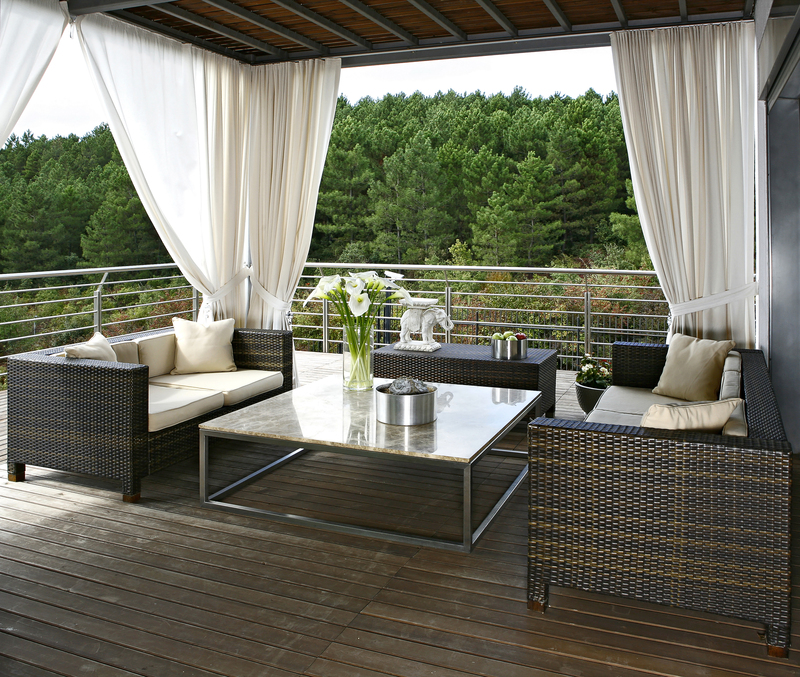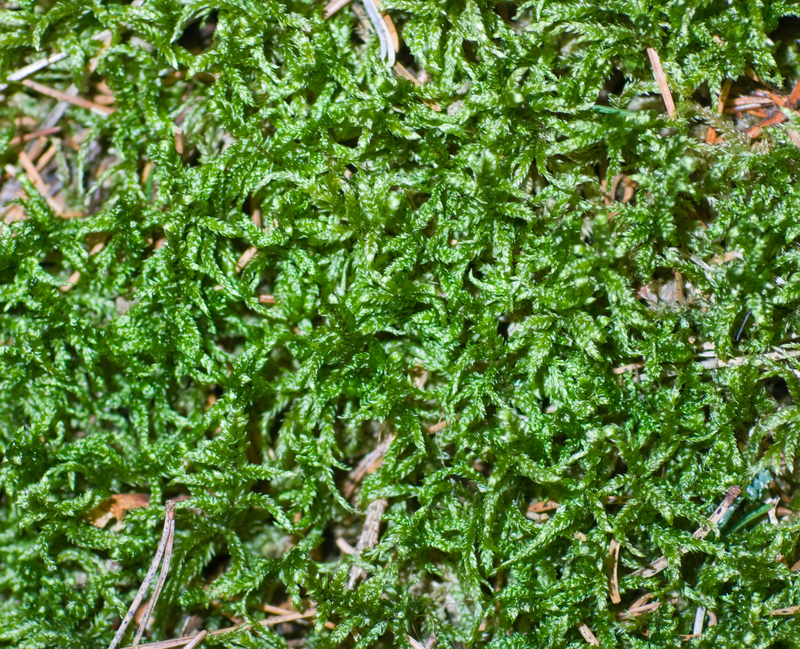Building a Garden Wonderland for Young Explorers
Posted on 18/08/2025
Building a Garden Wonderland for Young Explorers: Inspiring Imagination and Discovery
Are you dreaming of a vibrant outdoor sanctuary that sparks curiosity in children? A garden wonderland for young explorers is the perfect blend of fun, education, and nature. This comprehensive guide will help you design, create, and maintain an enchanting garden space that encourages hands-on discoveries, imaginative play, and a lifelong love for the natural world.
Why Create a Garden Wonderland for Children?
Children are natural adventurers. They are filled with wonder, eager to explore, and equipped with boundless creativity. By building a garden wonderland for young explorers, you offer them unparalleled opportunities to:
- Connect with nature: Instilling care for the environment from an early age.
- Build confidence: Master new skills through planting, harvesting, and crafting.
- Foster learning: Engage senses and curiosity with hands-on activities.
- Promote outdoor activity: Replace screen time with physical exploration and social play.
- Nurture imagination: Inspire storytelling, role play, and artistic expression.

Essential Elements of a Magical Garden Wonderland
Transforming an ordinary backyard into a garden paradise for young adventurers doesn't require vast stretches of land--only creativity, planning, and a touch of whimsy. Consider these essential features:
1. Themed Play Zones
Create distinct areas for different kinds of exploration. Mix and match themes to keep young minds engaged:
- Dinosaur Digs: Bury "fossils" in sandboxes for paleontological fun.
- Fairy Villages: Construct miniature houses with natural materials.
- Secret Reading Nooks: Hide cozy spots behind tall sunflowers or in willow domes.
- Bug Hotels & Insect Safaris: Encourage kids to observe wildlife in custom habitats.
Tip: Let your child help decide the themes, ensuring their garden truly becomes a personal wonderland!
2. Sensory Trails and Touch Gardens
Engage the senses for a richer experience. Include:
- Fragrant Plants: Lavender, mint, and lemon balm provide aromatic delight.
- Textures: Mix soft moss, rough bark, and smooth pebbles.
- Sounds: Wind chimes, rustling grasses, or bubbling water features.
Encourage children to touch, smell, and listen as they roam through their garden wonderland.
3. Edible Exploration
Growing food is both educational and exciting for kids. Designate a corner for planting:
- Strawberries and blueberries for easy snacking.
- Cherry tomatoes, sugar snap peas, and baby carrots for crunchy fun.
- Herb spirals where kids can pluck basil, oregano, or mint leaves.
Let children take the lead in planting, watering, and harvesting for an unforgettable learning experience.
4. Water Wonders
Children are mesmerized by water. Include:
- Mini ponds: Safe, shallow pools for wildlife-watching (supervise at all times).
- DIY streams: Pebble-lined channels for floating boats.
- Rain gauges: Measure rainfall and learn about the water cycle.
Water brings magic to any garden and invites frogs, dragonflies, and birds for children to observe.
5. Hideaways and Climbing Structures
Every garden wonderland needs spots to hide, climb, and dream. Try:
- Wigwams or teepees built from bean poles and climbing plants.
- Sunflower houses--fast-growing walls of sunflowers for secret club meetings.
- Sturdy tree stumps, logs, or low branches for safe climbing and perching.
These elements encourage independence and creativity as children invent new games and stories in their secret spaces.
How to Design a Garden Wonderland for Young Explorers
Ready to get started? Here are actionable steps to plan and build your garden paradise for kids:
1. Map Out the Space
- Sketch your garden, marking shady versus sunny areas, existing trees, and possible play zones.
- Leave open space for running and group games.
- Identify safe, visible locations for water features and hideaways.
Involving children in the design process helps them take ownership and stay excited as the project unfolds.
2. Prioritize Safety
- Avoid toxic plants--choose only non-poisonous, kid-friendly varieties.
- Install soft ground cover (e.g., grass, bark chips) for play areas.
- Ensure fences and gates are secure--a must for younger explorers.
- Supervise water features; use mesh covers on ponds if necessary.
Safety allows children to explore freely while giving parents peace of mind.
3. Select Plant Life With Purpose
Choose plants that offer more than just beauty:
- Pollinator-friendly: Attract butterflies and bees with coneflower, zinnia, and milkweed.
- Fast growers: Sunflowers and morning glories provide immediate impact.
- Unusual edibles: Pineberries, rainbow chard, or purple peas add interest.
Plant in raised beds or containers for easy reaches, especially for little hands.
4. Add Whimsical Touches and Art
- Painted rocks as "treasure" or fairy currency.
- Wind socks, pinwheels, and homemade mobiles.
- Stepping stones customized with handprints or mosaics.
Handmade decorations add a personal stamp and ignite the imagination.
5. Encourage Ongoing Exploration
- Switch up themes and features each season.
- Introduce scavenger hunts, nature journaling, or seasonal crafts.
- Host garden parties or picnics under a homemade arbor.
Keeping things fresh and interactive ensures children return again and again to their magical garden haven.
Step-by-Step DIY Projects for Garden Adventure
Building a wonderland for young explorers is even more memorable with DIY projects that invite family participation. Here are some child-friendly ideas:
DIY Bean Teepee
- Gather 6-8 long bamboo poles.
- Tie together at the top and spread out into a teepee shape.
- Plant pole beans or sweet peas at the base of each pole.
- Water regularly--within weeks, children will have a leafy hideout.
This simple structure provides both shade and a sense of mystery in the garden.
Fairy Garden in a Pot
- Fill a large planter with potting soil.
- Add miniature plants, moss, and twigs for landscaping.
- Create fairy houses and paths with stones and bark.
- Invite kids to add found "treasures" and tiny garden friends.
Fairy gardens stimulate imaginative play and can be placed anywhere--a doorstep, balcony, or as a garden centerpiece.
Simple Water Feature
- Use a shallow bowl or dish as a birdbath.
- Arrange smooth stones for perches.
- Add water and watch as birds and insects visit!
Observation of nature becomes a daily adventure with this easy addition.
Insect Hotel
- Stack pieces of bamboo, rolled cardboard, and pine cones in a wooden box.
- Secure in a sheltered spot.
- Check regularly to see which bugs have moved in!
Encouraging beneficial insects helps children understand ecological balance and sparks interest in the tiny wonders of the natural world.
Incorporating Educational Opportunities
Every garden wonderland for children is ripe with educational experiences. To nurture young naturalists:
- Practice scientific skills: Measure plant growth, record wildlife sightings, and compare different seeds.
- Teach environmental awareness: Start composting, discuss recycling, and collect rainwater.
- Integrate art and music: Use found objects for nature art; hang chimes made from shells or sticks.
- Encourage literacy: Place storybooks in outdoor nooks and host reading hours among the flowers.
The garden becomes a living classroom, offering lessons that are both fun and foundational for lifelong learning.
Seasonal Activities to Keep the Garden Wonderland Alive
Spring
- Plant wildflower seeds or start a butterfly garden.
- Host a "mud kitchen" day with old pots, pans, and imagination.
- Create bird feeders from recycled materials.
Summer
- Build a solar oven for s'mores or mini pizzas.
- Organize bug safaris with magnifying glasses.
- Host twilight storytelling sessions around a "campfire."
Autumn
- Collect fallen leaves for nature collages.
- Harvest pumpkins or gourds for crafts and cooking.
- Host a scavenger hunt for acorns, seeds, and pinecones.
Winter
- Hang suet and seed ornaments for winter birds.
- Build a shelter for small wildlife.
- Plan next year's themed gardens together.
Tips for Maintaining Engagement Year-Round
- Rotate activities and themes to reflect changing interests and the seasons.
- Share stories and adventures as a family--let children be the guides!
- Involve friends and community for group projects or neighborhood "garden clubs."
- Celebrate successes--hold a "garden graduation" when projects are completed.
Consistency, novelty, and partnership ensure your outdoor paradise remains a cherished place for exploration and memory-making.

Conclusion: Your Child's Garden Wonderland Awaits
Transforming your garden into a wonderland for young explorers isn't just about landscaping or adding whimsical decor--it's about sowing the seeds of curiosity, stewardship, and creativity that will last a lifetime. Whether you're working with a small patch or a sprawling yard, even the simplest changes can make a world of difference.
Remember:
- Involve children at every step.
- Cultivate variety for the senses and the mind.
- Prioritize safety and sustainability.
- Encourage exploration and celebrate every discovery.
So roll up your sleeves, gather your young explorers, and start building a garden wonderland bursting with magic, learning, and joy!
Frequently Asked Questions About Building a Kids' Garden Wonderland
How can I make a small garden exciting for children?
Use vertical planters, container gardens, and compact features like a fairy garden or sensory pot. Even a balcony or rooftop can become a magical place with the right elements.
What are the safest plants for kids' gardens?
Some favorites include sunflowers, snapdragons, pansies, marigolds, nasturtiums, mint, basil, strawberries, and chives. Always check that new plant additions are non-toxic.
How do I balance play and learning in a garden wonderland?
Blend hands-on gardening tasks with play features and educational prompts. Story stones, nature scavenger hunts, and simple journaling can keep learning fun and interactive.
Can building a kids' garden wonderland be eco-friendly?
Absolutely! Use recycled materials, indigenous plants, composting, water collection, and natural pest controls to make your garden sustainable and earth-friendly.
Do I need gardening experience to create a wonderland for young explorers?
Not at all. Start with simple projects and learn together. Many resources are available, and the process of discovery is part of the adventure!
Begin your journey today and create a garden wonderland that will nurture joy, creativity, and exploration for years to come.

